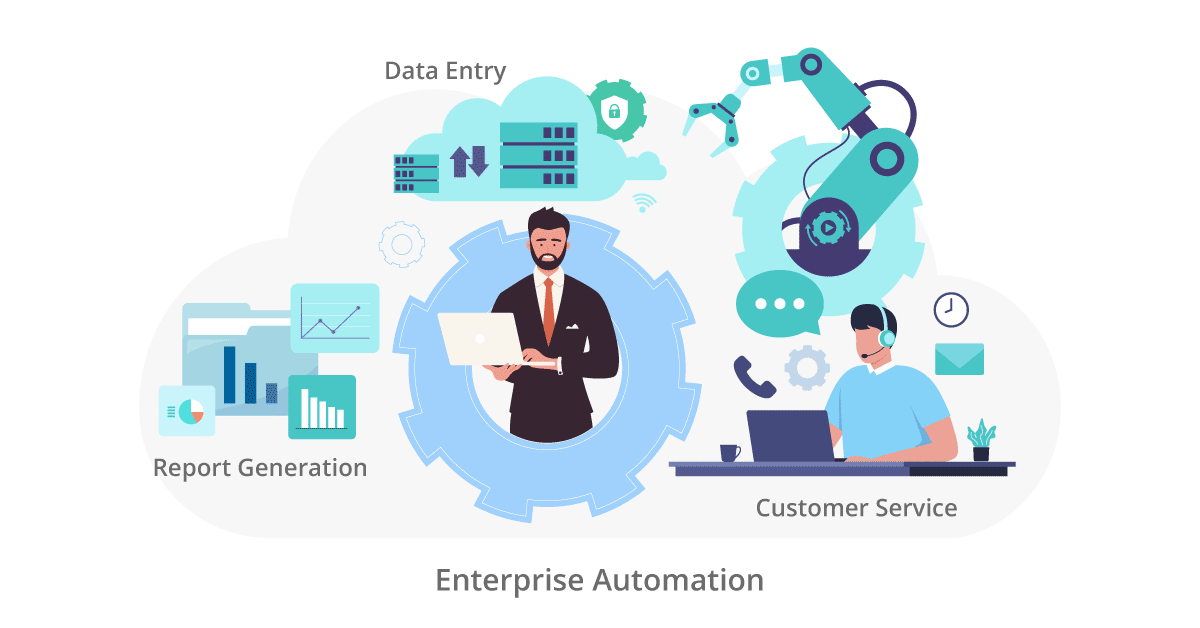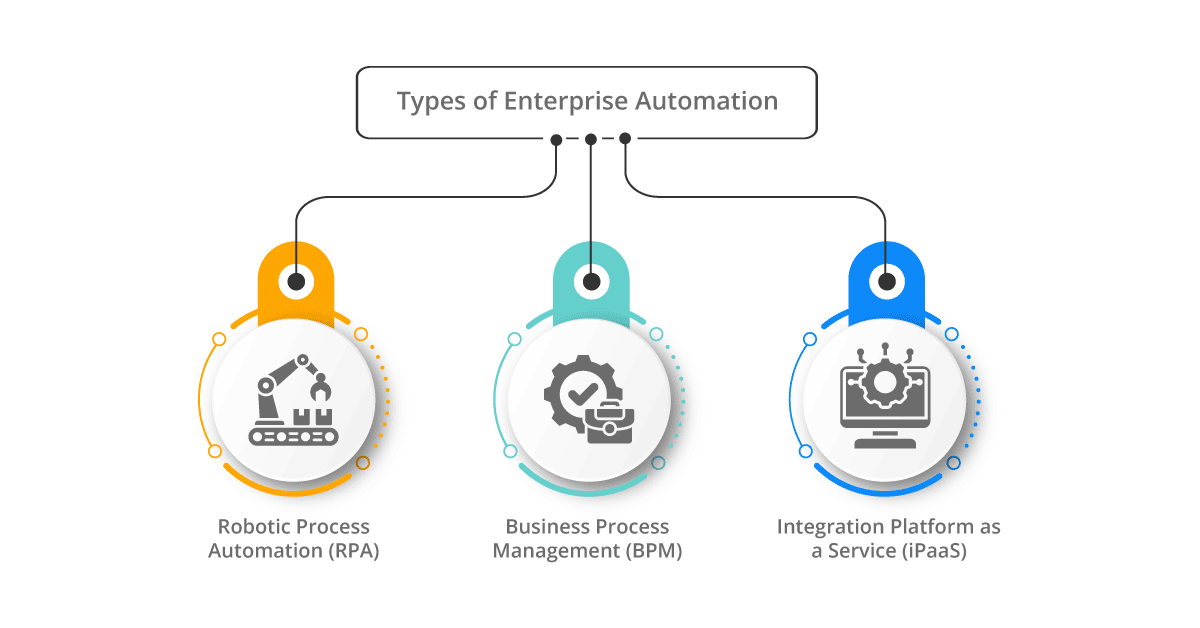The COVID-19 pandemic has forced many companies to adapt to new ways of working, including remote work and digital operations. As a result, businesses have had to embrace technology with greater agility than ever before. CIOs have reported that their companies’ digital transformation has accelerated, and this trend is expected to continue. End-user spending on public cloud services is projected to grow significantly this year.
Aonflow iPaaS – Free for First 3 Months!
Build and run up to 1,500 transactions monthly with no cost. No payment info needed!
To remain resilient, companies will need to continue evolving their digital architecture and utilizing applications and platforms that can automate their business processes. This will enable them to quickly scale and adapt to changing circumstances. The pandemic has shown that a digital transformation is no longer an option but a necessity for businesses to survive and thrive in the new normal.
In today’s world, most companies recognize that enterprise application integration (EAI) and Digital Transformation go hand-in-hand. Adopting enterprise integration platforms can simplify various complexities by synchronizing apps, data, and different business systems, whether hosted on-premise or in the cloud. This is done through a scalable cloud-based platform that supports various integration patterns.
However, there are challenges to this modernization process. These challenges can include data loss, fragmented information, disrupting business models, and haphazard deployment of emerging technologies, among others. Misalignments in the technology stack can also hinder successful enterprise application integration adoption.
In other words, implementing EAI can streamline business processes and help companies achieve their digital transformation goals. Still, it is essential to be aware of the potential obstacles that may arise during the integration process to ensure a successful outcome.
Before we get down to talking about iPaaS for Enterprise Automation, let’s explore what Enterprise Automation is, what it entails, how it works, and the need for iPaaS for it.
What is enterprise automation and what does it entail?
Enterprise Automation refers to the use of technology and software to automate and streamline business processes within an organization. It involves automating repetitive, time-consuming tasks and optimizing workflows to improve efficiency, reduce costs, and increase productivity.
Enterprise Automation can take many forms, such as Robotic Process Automation (RPA), Artificial Intelligence (AI), and Machine Learning (ML). These technologies enable organizations to automate tasks such as data entry, report generation, and customer service, freeing up employees to focus on more strategic tasks.
To implement Enterprise Automation, organizations need to evaluate their current processes, identify areas for improvement, and select the appropriate tools and technologies. They must also establish a company culture that encourages innovation and change and provide training and support to employees to ensure the successful adoption of the new technologies.
Enterprise Automation is a crucial component of digital transformation, enabling organizations to keep pace with rapidly evolving technologies and stay competitive in today’s business landscape.
How does enterprise automation work?
In today’s rapidly changing business landscape, organizations need to be more agile, efficient, and cost-effective than ever before. One of the most effective ways to achieve this is through Enterprise Automation. This process uses a combination of technology and tools to automate and streamline various business processes, freeing up resources and time for more strategic initiatives. In this blog, we’ll dive into the specifics of how Enterprise Automation works and how it can benefit your organization.
First, let’s define Enterprise Automation. It refers to the use of technology and tools to automate and optimize business processes within an organization. These processes can range from simple, repetitive tasks like data entry to complex, multi-step processes like supply chain management. The goal is to reduce manual labor, minimize errors, and increase productivity across the organization.
There are various types of Enterprise Automation tools and technologies, including Robotic Process Automation (RPA), Business Process Management (BPM), and Integration Platform as a Service (iPaaS). Each of these technologies has a unique set of features and capabilities that can be leveraged to automate different types of business processes.
One of the most popular Enterprise Automation technologies is RPA. It involves using software bots to automate repetitive tasks, such as data entry or processing invoices. These bots can be programmed to perform tasks in the same way that a human would, using a combination of user interface interactions and rule-based decision-making.
BPM is another type of Enterprise Automation technology that is used to automate complex business processes. It involves modeling business processes, defining rules and workflows, and automating the execution of those processes. BPM tools can be used to automate everything from sales processes to supply chain management.
Finally, iPaaS is an integration technology that allows organizations to connect disparate systems and data sources to create a more unified technology stack. With iPaaS, organizations can integrate cloud-based applications, on-premises systems, and data sources to create a more cohesive and efficient technology infrastructure.
So how does enterprise automation work in practice?
Integration Platform as a Service (iPaaS) has emerged as a popular solution for businesses to streamline their enterprise automation needs. iPaaS providers offer a range of features that allow businesses to integrate various applications and data sources, automate workflows, and manage the entire integration process from a centralized platform.
One of the key benefits of iPaaS is its ability to provide a unified view of all integration processes across the organization. With iPaaS, businesses can track and monitor all their integrations from a single dashboard, which provides visibility into the entire integration landscape. This enables businesses to quickly identify and resolve issues, prevent data silos, and ensure data consistency across all applications and systems.
Another advantage of iPaaS is its ability to provide pre-built connectors and templates for a wide range of applications and systems, which makes it easy for businesses to integrate their existing applications without the need for extensive coding or custom development. iPaaS solutions can also support a variety of integration patterns, including point-to-point, event-driven, and API-based integrations.
Here are some real-world examples of how businesses are using iPaaS to streamline their enterprise automation needs:
Let’s take the example of invoice processing. In a manual invoicing process, an employee would have to manually enter invoice information into a system, verify the accuracy of the data, and then approve the payment. This process can be time-consuming and error-prone.
With RPA, a software bot can be programmed to perform this task automatically. The bot can extract invoice information from an email or document, input it into the invoicing system, verify the accuracy of the data, and then approve the payment. This process can be completed in a matter of seconds, freeing up employees to focus on more strategic tasks.
In the case of BPM, a complex process like supply chain management can be automated by defining workflows and rules that govern the entire process. For example, a BPM tool could be used to automate the process of ordering raw materials, tracking inventory, and scheduling production. The tool would ensure that each step of the process is executed in the correct order and that all relevant data is captured and stored.
Here are a few more real-world examples of how iPaaS is used in different industries:
Retail: A large retailer wants to integrate their online store with their ERP system to manage inventory, orders, and shipping information. Using an iPaaS solution, they can connect their online store with their ERP system, ensuring that the inventory is updated in real-time and that orders are automatically processed and shipped.
Healthcare: A healthcare provider wants to integrate patient data from different sources, including electronic health records (EHRs), laboratory systems, and billing systems. Using an iPaaS solution, they can create a unified view of patient data, enabling healthcare providers to make more informed decisions and provide better care to their patients.
Financial Services: A bank wants to integrate data from different systems, including customer data, transaction data, and financial data. Using an iPaaS solution, they can create a centralized data hub that allows them to gain a complete view of their customer’s financial situation. This enables them to offer personalized financial advice, create targeted marketing campaigns, and streamline their internal operations.
Finally, iPaaS can be used to connect different systems and data sources within an organization. For example, an organization may have cloud-based customer relationship management (CRM) software, on-premises accounting software, and a database of customer orders. Using iPaaS, these disparate systems can be integrated to create a more comprehensive view of customer activity, which can inform business decisions and improve customer experience.
Why do businesses need enterprise automation?
Businesses need enterprise automation for several reasons. First, it can help them save time and reduce errors by automating routine tasks, allowing employees to focus on more strategic initiatives.
Second, automation can improve efficiency and productivity, leading to cost savings and faster time-to-market.
Third, it can help businesses stay competitive by enabling them to adapt quickly to changing market conditions and customer demands. Fourth, automation can help businesses reduce risk by ensuring that processes are consistent and compliant with regulations.
Finally, automation can help businesses improve customer experience by enabling faster and more accurate service delivery. Overall, enterprise automation is critical for businesses that want to stay ahead of the competition and achieve sustainable growth.
Aonflow is the leading integration platform.
You can kick-start by integrating your first-ever workflow in just a matter of minutes.
Why use iPaaS for enterprise automation?
There are several reasons why businesses use iPaaS for enterprise automation:
Faster deployment: iPaaS solutions that are readily available can assist development and operations teams in streamlining their entire development cycle, swiftly removing any deployment obstacles in real time, and accelerating enterprise application integration.
Better connectivity: iPaaS solutions provide better connectivity and continuity of business as they can connect and aggregate an enterprise’s entire technology stack into a cloud-based toolset in real time without disruptions.A centralized platform can link an enterprise’s diverse applications, systems, data centers, and databases running on hybrid-cloud, multi-cloud, and on-premise systems into one interface.
Low-code and no-code integrations: iPaaS solutions are designed to significantly simplify the entire technology infrastructure within an organization by reducing the complexity of coding and custom integrations. When using these easy-to-use enterprise integration solutions, users can experience faster results with a simple “drag-and-drop” interface. With less need for coding, IT teams can delegate internal projects and concentrate more on the Digital Transformation journey.
Democratization of technology: The swift implementation of iPaaS makes technology more accessible to a broader range of people, promoting the democratization of technology. This allows more individuals to access new, emerging technologies within a shared ecosystem. In addition to harmonizing various points of enterprise application integration, the platform enhances user experiences and drives accelerated technological innovation.
iPaaS can help businesses improve their agility, streamline their operations, and accelerate their digital transformation journey by providing better connectivity, low-code integrations, and democratization of technology.
How does iPaaS step in for enterprise automation?
iPaaS, or Integration Platform as a Service, plays a critical role in automating enterprise processes by providing a cloud-based platform for connecting and managing various software applications, data sources, and systems. The iPaaS architecture makes it possible to integrate and automate complex processes with minimal coding, resulting in faster deployment times and reduced operational costs.
One of the main advantages of iPaaS is the ability to connect applications and systems across different platforms, including cloud-based and on-premise systems, providing seamless data flow across an organization’s entire infrastructure. This allows teams to focus on innovation and customer experience, rather than the technicalities of integrating systems and data.
iPaaS also enables faster development cycles with its low-code or no-code integrations. With these integrations, teams can use a graphical user interface to build integrations quickly and easily, without the need for advanced coding skills. For example, an iPaaS can help a marketing team integrate a customer relationship management (CRM) system with an email marketing platform, enabling them to create targeted email campaigns based on customer data.
Moreover, iPaaS provides monitoring and management capabilities for integration flows, allowing teams to quickly identify and address errors or issues that may arise. This ensures the continued smooth functioning of the integrated systems and data, thus reducing operational costs and increasing productivity.
Final thoughts
To summarize, iPaaS is a crucial tool for enterprise automation that enables organizations to streamline their operations, improve productivity, and enhance customer experience by integrating and automating their various systems and applications. By reducing the complexities of enterprise application integration, teams can focus on creating value and driving innovation.
Enterprise Automation is essential for businesses in today’s fast-paced digital landscape. With the increasing adoption of cloud technology and the need for seamless connectivity, businesses are turning to automation to improve productivity and efficiency. Implementing an automation strategy that includes iPaaS solutions can significantly streamline workflows, improve connectivity and business continuity, and reduce coding complexity.
To successfully implement Enterprise Automation, businesses need to automate business processes based on best practices, adopt an enterprise automation platform, and federate delivery and management of automation to business units. By doing so, organizations can achieve a faster time to deployment, better connectivity, and democratization of technology, and ultimately thrive in an increasingly competitive market.
As we continue to navigate the challenges of the COVID-19 pandemic and beyond, it is clear that digital transformation will be essential for businesses to survive and thrive. By leveraging automation, organizations can stay ahead of the curve and position themselves for long-term success.
Aonflow iPaaS – Free for First 3 Months!
Build and run up to 1,500 transactions monthly with no cost. No payment info needed!


